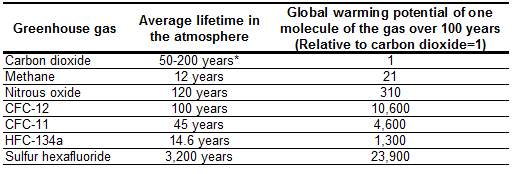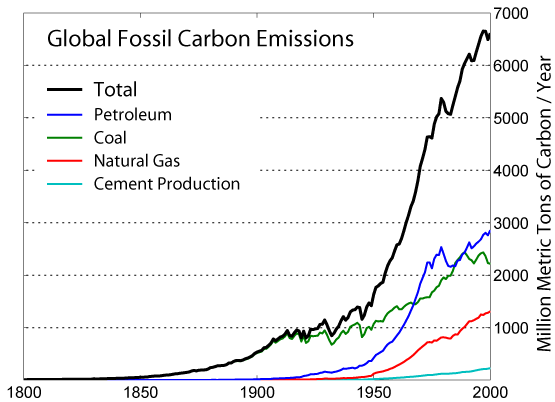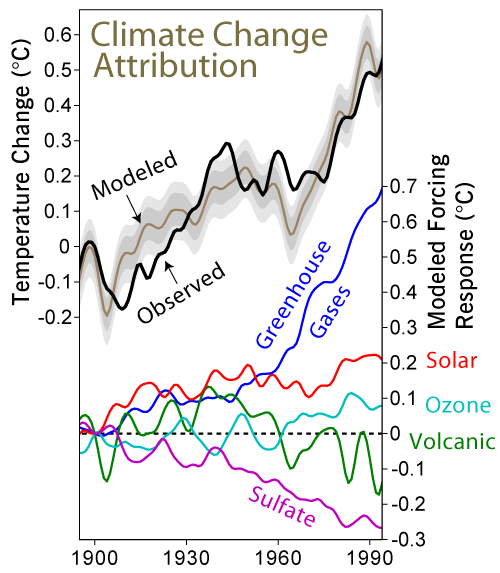November 2010 - Carbon dioxide: the 800-pound gorilla that we have to talk about
The International Energy Agency recently raised its forecast for global oil demand. The agency, based in Paris, reports that global daily oil consumption will reach 86.9 million barrels in 2010. And yes, this is each and every day. The forecast for 2011 is 88.2 million barrels a day. Thus the discovery of a billion barrel oilfield would be consumed in about 12 days at these rates. This report was issued in October 2010 and is available free on-line.
The BP Gulf oil spill earlier this year by comparison is estimated to have been about five million barrels over about a three month period. The images, many of which were visually disturbing because of the oil's impact on wildlife and wetlands, evoked a visceral response for many. The disconnect most climate scientists see however, is the fact that we 'burn' 17 times more oil every day: and that this results in enormous amounts of carbon dioxide being emitted into our atmosphere. We just can't see it.
Carbon dioxide is a greenhouse gas [GHG] and has a long residence time in the thin gaseous envelope that surrounds our planet. The table listing seven major GHG's [p.18 "Climate Change Indicators in the United States", issued by EPA, free and available on-line] makes two key points. First, is the residence time of the individual greenhouse gases in the atmosphere, and second, is the global warming potential of the gases relative to carbon dioxide.

For carbon dioxide we see that the average lifetime in the atmosphere is 50 — 200 years. Thus those 86.9 million barrels of oil we consumed yesterday, and that same number we consume today, and tomorrow, all wind up in the atmosphere as carbon dioxide. And they will be there a long, long time. During this long residence time this GHG will continue to accumulate and to do what physics requires: it absorbs infrared radiation that would normally be emitted to outer space and thus warms our atmosphere and planet.
The lifetime of carbon dioxide in the atmosphere has a range, as indicated, since many factors influence its presence. It is fortunate that the oceans absorb about 30% of this gas that is emitted, but even then it can be released back into the atmosphere when water temperature, wind and/or ocean current conditions change. Research continues to further define this atmospheric lifetime.
Of concern in all of these gases, is not only the life span of each, but their global warming potential. The gaseous refrigerants [CFC, HFC] have a particularly powerful effect on climate as does sulfur hexafluoride. This latter compound, which has industrial and medical applications, not only has a residence time close to the age of the Egyptian pyramids, but is thousands of times more potent than carbon dioxide as a GHG. It is the most potent GHG that has been evaluated and Europe has banned its use for almost all applications since 2006.

Beside the lifespan and global warming potential of these GHG's, we need to look at amounts emitted. This is where we encounter the big gorilla: carbon dioxide. The graph shows the global total metric tons [1 metric ton = 1.1 tons] of carbon emitted per year and highlights the sources. In 2010 the amount will be in excess of 9 billion metric tons of carbon, equivalent to 33 billion tons of carbon dioxide. These are huge numbers. The graph from 1800 to date clearly shows the large global emissions that have occurred from fossil fuels only, especially since 1950.
Note: When all seven GHG emissions are added together, they are equivalent to more than 40 billion tons of carbon dioxide in 2010 alone.
Our next graph is a series of curves in "Climate Change Attribution" from Wikipedia. Scientists, in different research centers, have developed climate models that incorporate changes in solar radiation, dust from volcanic effects, weathering, ozone levels, land use changes, biomass production, absorption of the gas in oceans, and so forth. These factors are known to impact climate change. The "Modeled" temperature prediction shows a close agreement with the "Observed" temperature with GHG emissions the largest contributor.

So let's review the science:
…carbon dioxide is a GHG and the physics behind it have been known for over a century; …carbon dioxide has a long atmospheric lifetime and our daily/annual emissions accumulate; …carbon dioxide is being produced and emitted in huge amounts through the combustion of fossil fuels; …the rate of carbon dioxide emissions is increasing; …the level of this gas in the atmosphere is much higher today than it has been in at least 800,000 years and growing annually; …various projections forecast levels of carbon dioxide that are much, much higher in the coming decades depending on steps we take today; …the correlation of atmospheric temperature with increased carbon dioxide emissions is very strong.
Three more points: The Intergovernmental Panel on Climate Change [IPCC] 2007 report, page 3, states " The understanding of anthropogenic warming and cooling influences on climate has improved since the TAR [third annual report], leading to very high confidence [>90%] that the global average net effect of human activities since 1750 has been one of warming … ."
The National Academy of Sciences [NAS] issued a report in 2010: "Advancing the Science of Climate Change." The summary is free and available on-line. The NAS is the highest ranking science body in the United States and was chartered by Congress in 1863 to advise it on all science matters. The report states, "Conclusion 1: Climate change is occurring, is caused largely by human activities, and poses significant risks for — and in many cases is already affecting — a broad range of human and natural systems."
A recent paper, "Expert credibility in climate change," appeared in the Proceedings of the National Academy of Sciences by W. Anderegg et. al in 2010 [available on line]. It looked at "... an extensive dataset of 1,372 climate researchers and their publication and citation data to show that (i) 97-98% of the climate researchers most actively publishing in the field support the tenets of ACC [anthropogenic climate change] outlined by the IPCC, and (ii) the relative climate expertise and scientific prominence of the researchers unconvinced of ACC are substantially below that of the convinced researchers."
And so the science and story continues.
The scientific career of Raymond N. Johnson, Ph.D., spanned 30 years in research and development as an organic/analytical chemist; he is currently founder and director of the Institute of Climate Studies USA (www.ICSUSA.org). Climate Science is published the first Sunday of every month.



